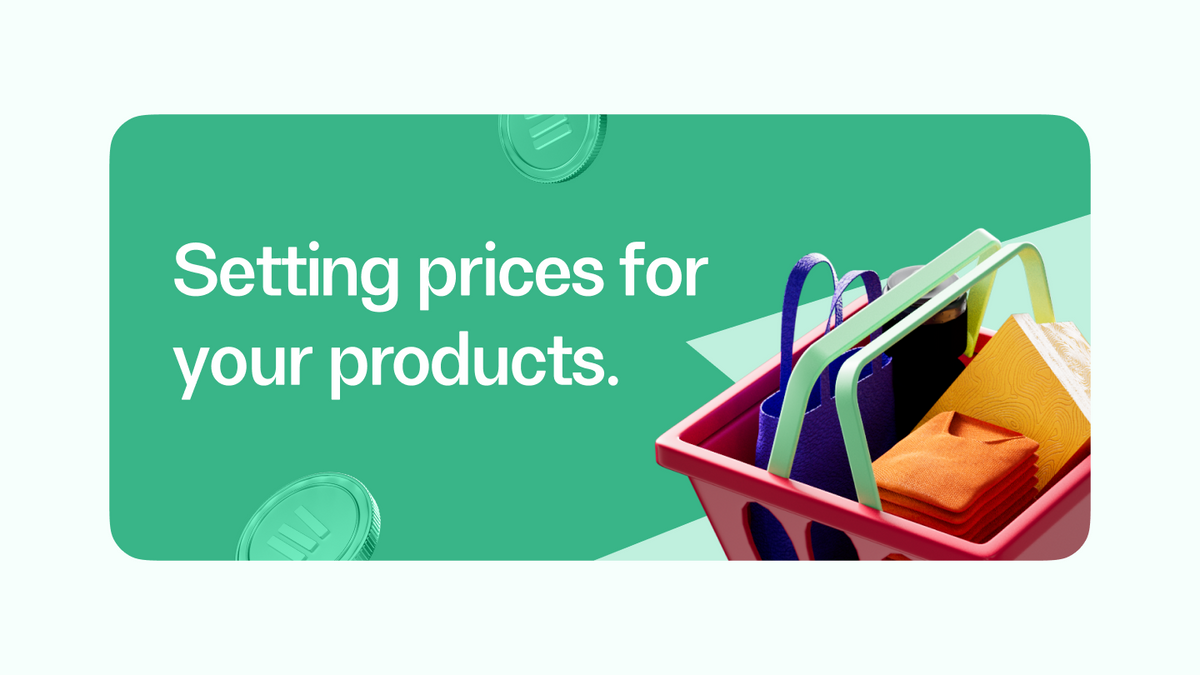Setting prices for your products? Avoid these 3 mistakes!

So you’ve decided to start a business. Congratulations! This means you’ve done majority of the ground work and you’re ready to actually start selling. If you don’t know what you need to do or NOT do to start a successful business, you might want to check out this article first.
If you’re still here, then you’re at one of the most crucial stages, the pricing stage. I’ve heard so many people ask how to price their products, and watched too many people set prices without considering some hidden costs and it has come back to bite them in the butt massively.
This article is to save you from these common mistakes and keep your business as profitable as possible from the beginning.
1. You’re not considering your costs
So you want to sell slippers, you buy them at $20 for 20 pieces from your supplier, with a delivery cost of 1 dollar for the entire shipment. Your selling price per unit should be $21 divided by 20, right? That’s $1.05 per pair. Sounds fair, right?
Wrong!
You need to take a few more things into consideration
- How much profit do I want to make on each item?
- How much does my packaging cost per unit?
- What other costs do I incur between the process of procurement and delivery? If you’re not sure what hidden costs you may be incurring, here’s a good place to start.
A good formula for calculating cost is cost price + profit margin. And when we say “cost,” we mean every cost.
Let's break this down further. You have your slippers, but what about the box they go in? Let’s say you’re using branded boxes to give your slippers that extra touch, and each box costs $0.50. And if you're shipping them individually, the average shipping cost might be $2 per pair. You could charge your customer separately for shipping, but if you decide to offer “free shipping,” you’ll need to bake that into your price.
The Real Cost Breakdown:
- Slipper Cost: $1.00 (20/20)
- Shipping Cost: $2.00
- Packaging Cost: $0.50
- Total Cost Per Slipper: $3.50
Now, if you were still selling at your initial price of $1.05, you'd be losing a staggering $2.45 per pair! This is why meticulous cost tracking is vital.
Remember, the costs don't stop at the product itself. You also need to factor in:
- Variable Costs: These change with your production volume. For instance, if you sell more slippers, you'll need more boxes.
- Fixed Costs: These stay the same regardless of sales, like website hosting or monthly software subscriptions.
Actionable Tip: Create a detailed cost spreadsheet. List every expense, from the slippers themselves to the tape you use to seal the boxes. Regularly update it, and use it to adjust your prices as needed.
2. You’re not factoring in your time
Now you know about business costs that you may be neglecting, but there's another variable, TIME.
Let’s say it takes you an hour to photograph, upload, and post each new product. That’s time you’re not using to fulfill orders, talk to customers, or simply rest. Your time is valuable, and if you’re not including it in your pricing, you’re undervaluing your business (and yourself).
This mistake is especially common with handmade or custom products. People often calculate the cost of materials, but forget about the hours it takes to actually make the item.
If your product takes 3 hours to make and you’re selling it for $10, ask yourself: would you be okay earning a little over $3/hour? Probably not.
Actionable Tip:
Set an hourly rate for yourself. Think of it like this: if you hired someone to do what you’re doing, how much would you pay them? Include that in your pricing. Your time is one of your most important business assets—treat it like it.
3. You’re not considering your competitor’s prices.
If you want your brand and products to be perceived as premium or luxury, but you’re selling at a price way lower than your competitors, you might be sending the wrong signal.
In trying to out-price the competition, you could be undercutting your own brand. Because like it or not, people often associate value with price. If everyone in your niche is selling for $50 and you’re offering something similar at $20, people might assume your product is cheap in quality—even if it isn’t.
But that doesn’t mean you should just match prices blindly. If your product is better, made with more care, or offers a better experience, you have every right to charge more. The key is to make sure your pricing is aligned with the value you're offering, and communicating this value very clearly to your audience.
Actionable Tip:
Do a little market research. Look at your top 3–5 competitors. What do they charge? How do they describe their products? What makes your product different and worth the price you're setting? Use this to craft a pricing strategy that makes sense for your business.
Conclusion
Getting your pricing right from the beginning sets your business up for success. It helps you stay profitable, build trust with your customers, and grow with intention.
But pricing isn’t a one-time thing. It’s something you’ll need to revisit regularly as your business evolves to consider new costs, price new products and create new strategies.
That’s why tools like Catlog exist.
Catlog helps you simplify selling on social media. With your own online storefront, easy payment options (local and international), and a dashboard that helps you manage inventory and track performance, you can stay focused on what matters—growing your business.
Ready to take the guesswork out of selling? Create your Catlog store today.

